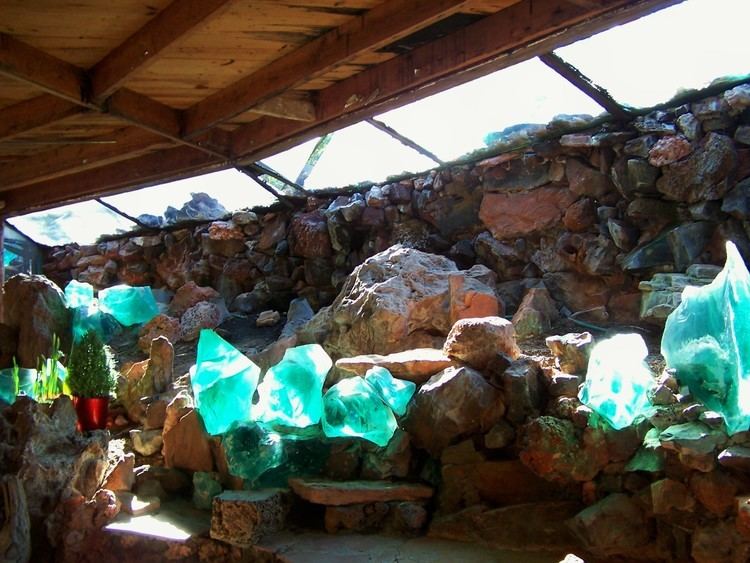Built 1950 NRHP Reference # 01001354 Area 3 ha Added to NRHP 13 December 2001 | Architectural style Organic Opened 1950 Demolished 2011 | |
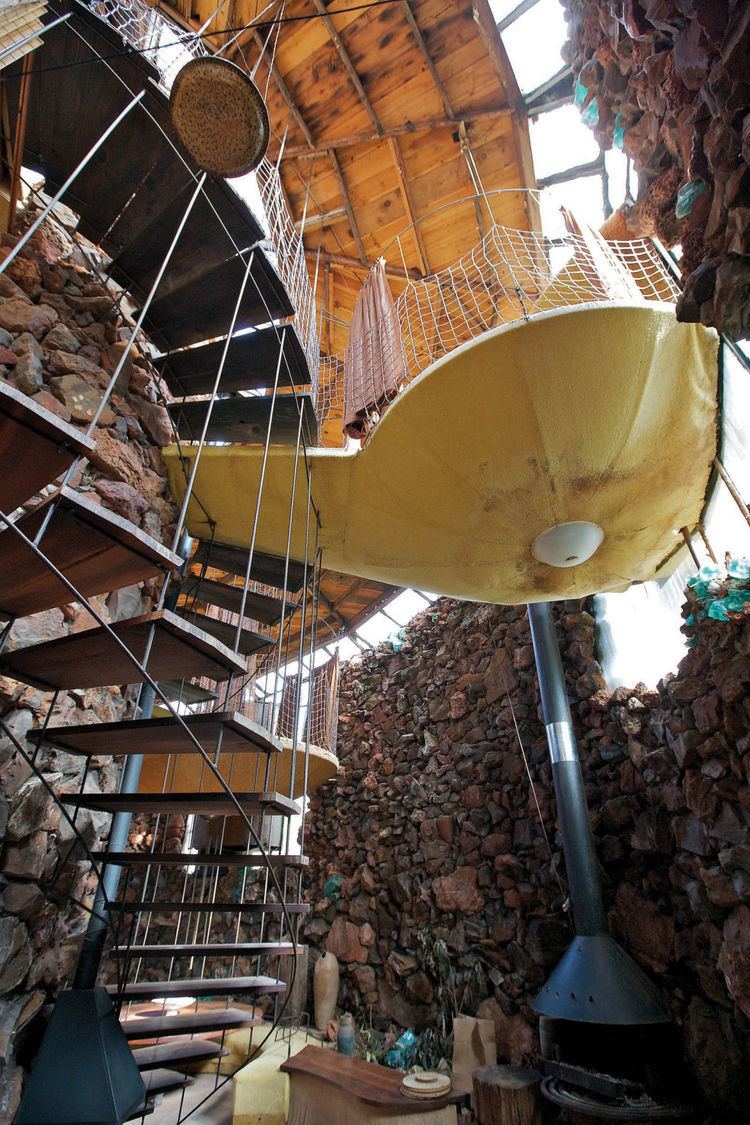 | ||
Similar Ledbetter House, Hopewell Baptist Church, John Frank House, Boston Avenue Methodist, Pavilion for Japanese Art | ||
Bavinger housenosound
The Bavinger House was completed in 1955 in Norman, Oklahoma, United States. It was designed by architect Bruce Goff. Considered a significant example of organic architecture, the house was awarded the Twenty-five Year Award from the American Institute of Architects in 1987. It was added to the National Register of Historic Places in 2001.
Contents
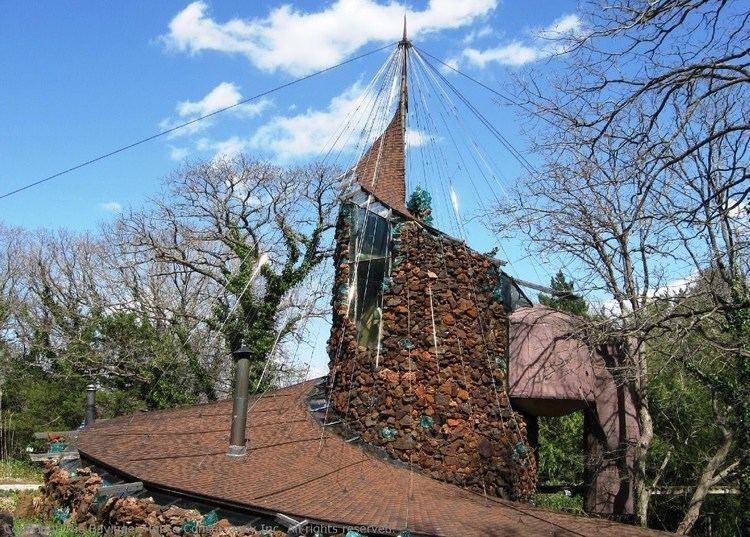
Bavinger house entrance
History
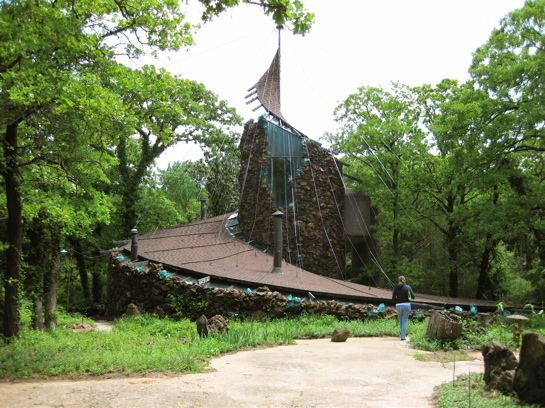
The house was constructed over the course of five years by Nancy and Eugene Bavinger, the residents of the house, who were artists, along with the help of a few of Eugene's art students, volunteers, and local businesses. The Bavingers moved into the house in February 1955, and Life magazine featured the house in its September 19, 1955 issue. Despite its remote location, the house became an attraction; the Bavingers first tried to limit visitors by charging a dollar per guest. Life reported that the tours had yielded over $4,000, and eventually (according to Goff) they raised over $50,000 before finally deciding they didn't want to be disturbed by the constant flow of tourists.
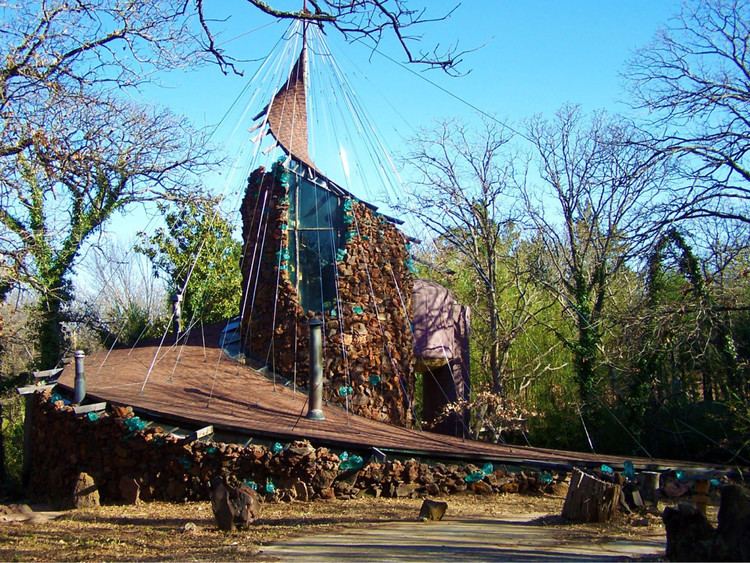
The house was vacant for more than a decade and had fallen into disrepair before it was reported in 2008 that the house would be renovated and reopened for tours. Fundraising efforts, however, ran into difficulties. The house was damaged and its central spire left broken at a 45-degree angle after a powerful windstorm in June 2011. The official website for the house stated that the house "will not be able to re-open", which was later changed to "Closed Permanently", and in August 2012 further edited to say "The House will never return under its current political situation". The official website was taken offline in August, 2011, and its domain license was allowed to expire.
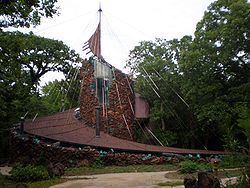
In April 2016 The Norman Transcript reported that the house had been demolished and completely removed, leaving only a vacant lot, as confirmed by the president of the Bruce Goff-focused preservation organization Friends of Kebyar.
Architecture
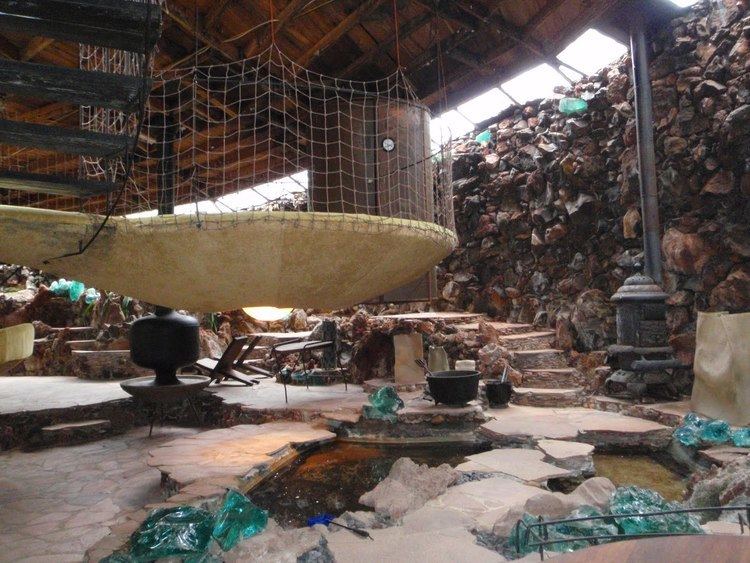
The wall of the house was a 96-foot long logarithmically curved spiral, made from 200 tons of local "ironrock" sandstone dynamited (by Eugene) from a piece of purchased farmland near Robin Hill School, a few miles away from the house and hauled back on Eugene's 48 Chevy flatbed truck. The structure was anchored by a recycled oil field drill stem that was reused to make a central mast more than 55 feet high. The house had no interior walls; instead there were a series of platforms at different heights, some with curtains that could be drawn for privacy. The ground floor was covered with pools and planted areas.
